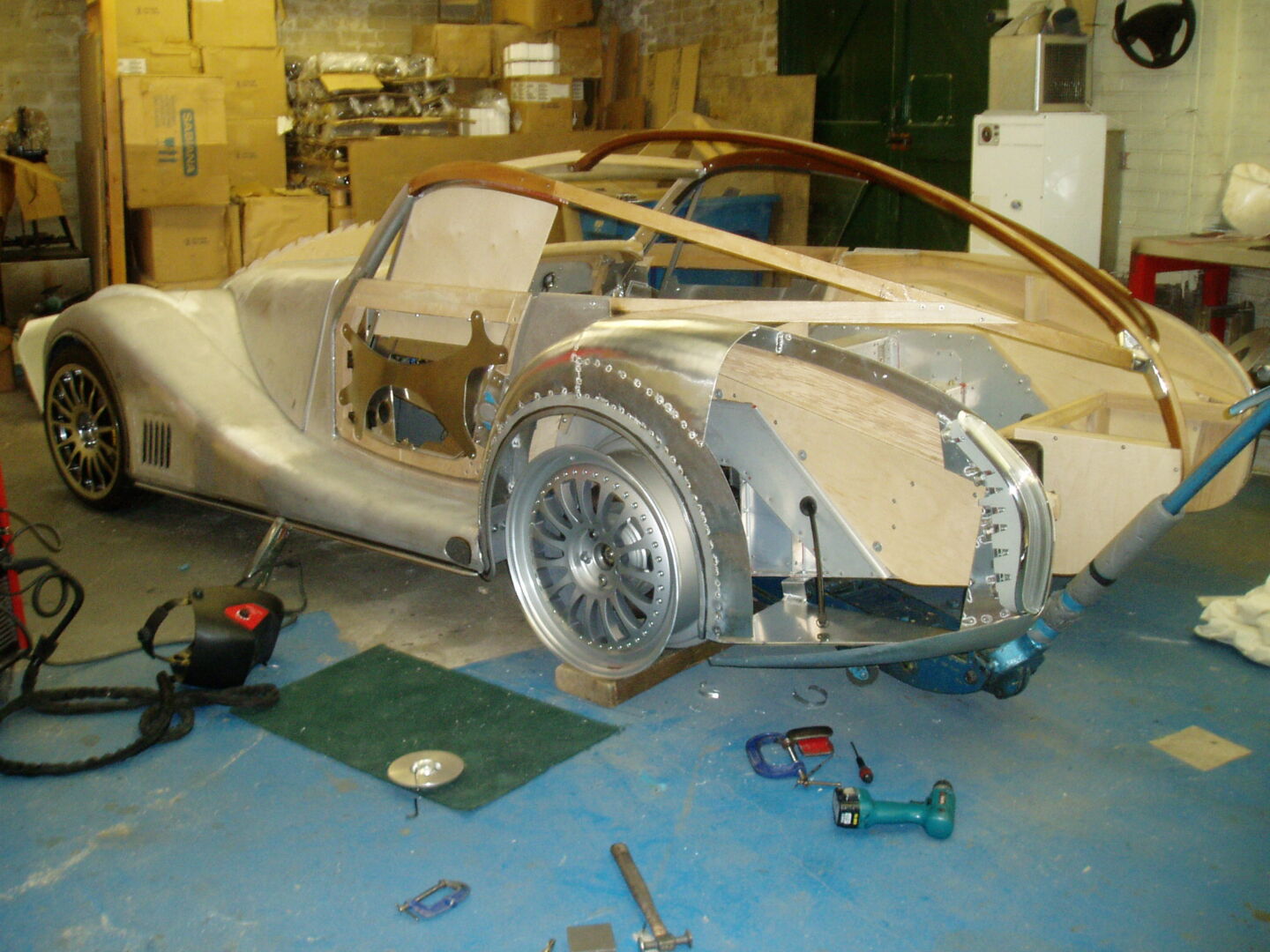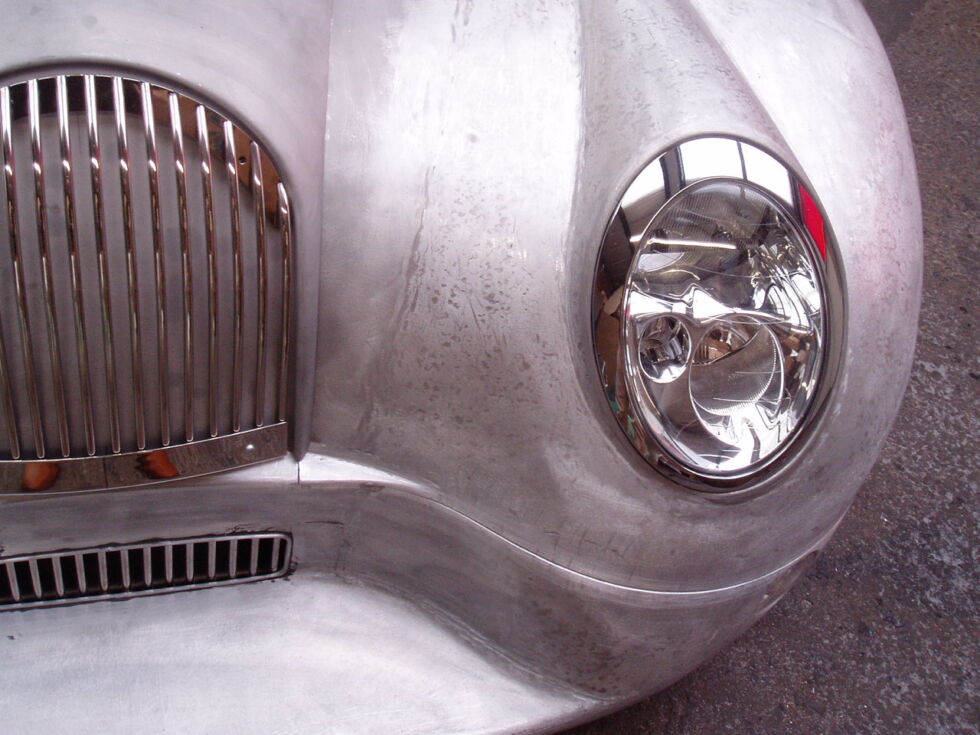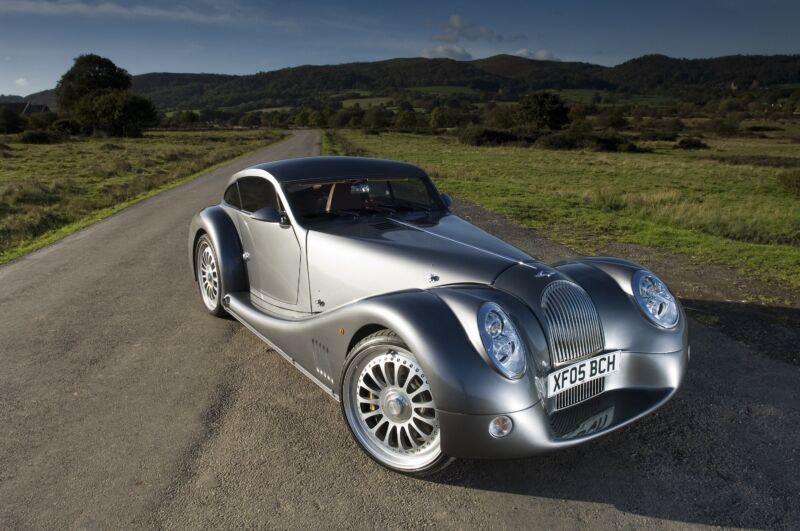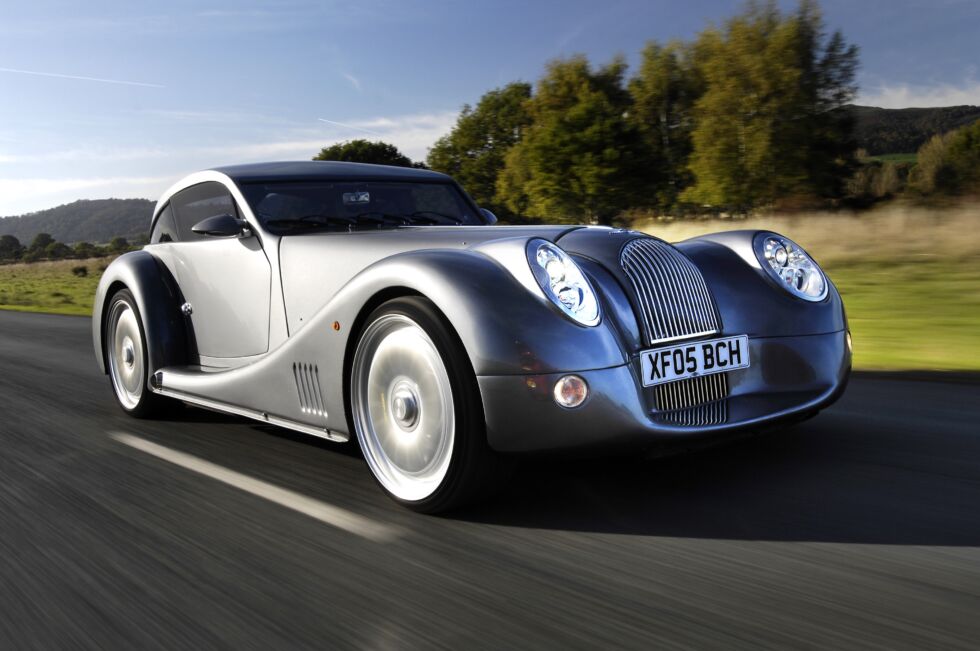The Morgan Motor Company is still best known for producing vintage roadsters and for continuing to use wood, as demonstrated by the Aeromax modern coupe that they designed at that time.
Since its founding more than a century ago, the Morgan Motor Company has produced new automobiles that mimic older models (OK, its cars appeared modern when the company debuted, but you get the idea). The company’s goal has always been to provide customers with an exhilarating dose of traditional British sports eccentricity—a proposition that differs from automobiles that have engines mounted behind the driver.
You are watching: At that time, the Morgan Motor Company created the Aeromax, a contemporary coupe.

However, the business tried its hand at something new back in the 2000s with the Aero 8. The first car had an unusual appearance, but it was powered by a V8 and made funny noises. I was not surprised by its unique appearance, as current Head of Design Jon Wells put it so eloquently. “There wasn’t a designer [at Morgan],” he stated. Not a designer when he began building three-wheel runabouts in the 1900s, Henry Morgan was simply “an industrious fellow.” From then on, the company operated as a family-run enterprise producing uniformly designed cars. The engineers only had to ensure that new models met standards once the vehicles were in the proper shape.
Customers in the twenty-first century—even those who are looking to purchase a Morgan—expect more in terms of ergonomics and practicality. As a result, the company has hired real designers who can quickly and easily create a picture of the past, present, and future. However, until a man by the name of Matthew Humphries wrote to the business in 2004, there wasn’t even one. At the time, Humphries was enrolled in the prestigious automotive design program at Coventry University, and like other designers, he aspired to become well-known.
He submitted Charles Morgan his work after getting turned down elsewhere for a degree that required a placement to gain practical experience. “I’d sent my folio to Charles after being rejected from BMW and [other] places, and he liked it and said, ‘Why don’t you come and work at the factory over the summer?'” Humphries informed me.
Humphries was sent to work in a factory basement office. “At that point, Morgan had no designer at all. Humphries recalled that Charles Morgan had literally taken a Beetle headlamp, stuck it in a wing, and said, “Right, go and knock a bit of metal around that.”
Humphries remembered that the computer-aided design workstation was manned by just one person. Even the engineering crew was small.
Read more : Exxon Mobil Credit Card Login
“They put me in a little office above the woodshop, and it was noisy as hell,” he stated. “Every time I walked through the woodshop, I used to get wolf-whistled by all the guys because I had a lot of hair.”
Humphries, who was made of tough material, knew that he was in the perfect place to produce some absolutely exceptional work. “I quickly found out that being there was the best thing because it was one of those places that you see the fantastic skill that the guys had, same as the tin [metalwork] shop,” he stated. “Being right in the factory was brilliant because I started to recognize different parts of Morgans that weren’t exposed or visible to the public.”
Morgan wasn’t a business that was looking to change things at the time. While competitors rushed to make the finest vehicles that modern technology could deliver, it produced new cars that didn’t appear like new cars. Why should I bother fixing it when nothing was broken?

So why bring a designer along? Charles Morgan, it turns out, had a scheme. Prince Eric Sturdza, a collector of classic cars and a huge fan of Morgans, was looking for a hardtop to rival the company’s soft-top-only Aero 8, and Humphries was the perfect candidate. Not many other automakers, even the most bizarre ones like Morgan (assuming any exist), would have granted this commission to an intern.
After spending so much time in the factory, Humphries realized that the skill that went into each car could be employed as a design element. He was also influenced by the Bugatti Atlantic, Talbot Lagos, and Figoni et Falaschi, three examples of the heyday of fast-flowing, late-1920s design. He got to work, the drawings were accepted, and a model was created in clay.
When the clay was done, Prince Sturdza arrived in Malvern, nodded, and said he would accept it. “Ah, wonderful, awesome. I adore it. “I’ll take it,” he declared. I mistook him for the clay model. Thus, I returned to the university,” Humphries declared.
Humphries went back to his studies, thinking he was done and that his placement had gone quite well—that is, until he received a call.
Read more : Exxon Mobil Credit Card Payment
He stated, “It was around October 2004.” “I received a call from Dave Kale, the smart guy from the tin shop. Dave was the person to contact if you needed anything made of aluminum. “I have an issue with your clay model,” he stated. They attempted to increase its scale.”
It is noticeably… differently sized if you have ever seen a concept clay or an early sketch from an automotive designer. Humphries’ creation would have had wheels better suited for a tractor and a cabin unsuited for a human. And you would anticipate what? Morgan had never “done” a full-scale concept, much less a clay model. Humphries’ odd double life started when he got called in to work.
His car, called the Aeromax after Charles Morgan’s son Max, was not only going to be more than a clay model; it was also scheduled to be displayed at the Geneva Motor Show in 2005. After that, Humphries’ time was divided between going to college to pursue a career in automobile design and working on the lowdown to design cars—he was unable to disclose to others that he was developing a new vehicle because it was a corporate secret.
The ensuing months were quite busy. The design had to be adjusted to make it somewhat production-ready, multiple teams had to learn how to actually manufacture the car, and the business needed to locate appropriate, previously homologated parts to keep costs down. For the front end, modern Mini headlights were selected, but what about the back end?
“Before we’d formally presented the car to Prince Sturdza, I’d been sketching and thinking about the rear lamps on the Lancia Thesis,” Humphries stated. “When I called Charles [Morgan], he replied, ‘Oh, I’m on vacation in Italy anyhow, I’ll just pop by a dealer and grab some.'” I recall him returning from the airport with a Toblerone and a set of taillights. Because we already had those bulbs, we ultimately centered the wing around them.”
Humphries found during this period that while the engineers and development team were difficult to win over—he was still a student, after all—the individuals in the various shops who had betrayed him were not so much. That required less skill. He understood and respected their actions. “We know what you’re doing is really, really skilled,” I essentially remarked as I entered. This is great,’ and Nigel on the ground said, “Well, this is just what I do; I’ve always done it.” That’s what my grandfather and dad did. We simply do it that way. No, buddy—you’re quite talented. This work is amazing.”

Nevertheless, the Morgan team succeeded, and the Aeromax debuted at the 2005 Geneva motor show. However, it was concealed, whereas the original model was visible. It wasn’t even on show. “I was 21, and I’d never been to Geneva before, and the Aeromax was in the center on a turntable on the Morgan stand with a wall around it, which made no sense, and the model was outside it,” Humphries recalled. “When my Coventry tutor showed there, my model was on the exterior of the wall. “Oh, isn’t that fantastic!” he exclaimed. Your model was brought by them! I led him around the wall and instructed him to follow me, and there it was—the full-size automobile. I recall him saying, “How the fuck has he done this?” with his mouth hanging open.
The final result was favorably received; it had a 4.4 L V8 engine that produced 333 horsepower (248 kW) and 332 lb-ft (450 Nm) of torque, along with a loud roar. After Morgan declared that it would sell 100 of them, most of them sold out right away. It was a daring move for Morgan, demonstrating that it was more than just an Olde Worlde automobile manufacturer.
Source: https://exxonmobilgasstation.org
Category: exxonmobilgasstation
